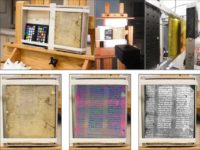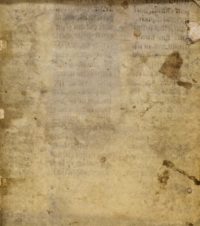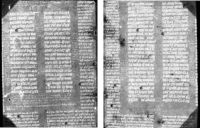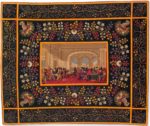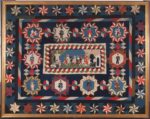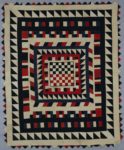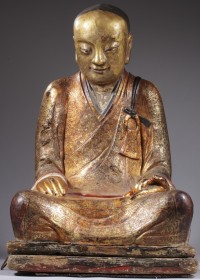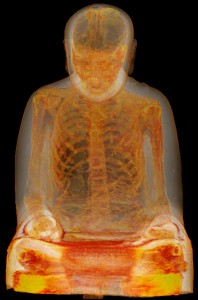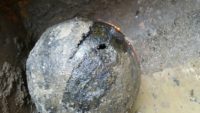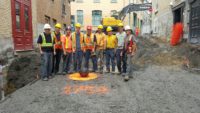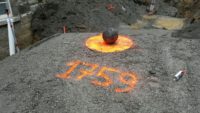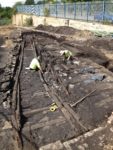 In 2013, an excavation in advance of future construction at the site of the Neptune Shipyard in Newcastle upon Tyne unearthed a unique survivor of Newcastle’s early industrial history: an 80-foot stretch of a wooden railway dating to the 18th century. This railway wasn’t used by trains as they hadn’t been invented yet. It transported wooden “waggons” (chaldrons) pulled by horses. Supported by the sturdy tracks which ran at a slight incline to take advantage of gravity, the waggons were able to carry far heavier loads of coal far more quickly from local collieries straight to the docks of the river Tyne. It was identified as a section of the Willington Waggonway built in 1785.
In 2013, an excavation in advance of future construction at the site of the Neptune Shipyard in Newcastle upon Tyne unearthed a unique survivor of Newcastle’s early industrial history: an 80-foot stretch of a wooden railway dating to the 18th century. This railway wasn’t used by trains as they hadn’t been invented yet. It transported wooden “waggons” (chaldrons) pulled by horses. Supported by the sturdy tracks which ran at a slight incline to take advantage of gravity, the waggons were able to carry far heavier loads of coal far more quickly from local collieries straight to the docks of the river Tyne. It was identified as a section of the Willington Waggonway built in 1785.
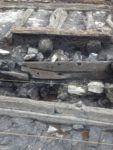 The railway has double height rails — a common feature in the Tyneside area where there was soggy terrain to overcome and hard wear on the tracks was a constant problem — and is made of an eclectic mixture of wood sources. There are rough-hewn sleepers that are basically intact tree limbs, cut and planed pine sleepers and repurposed ship planks.
The railway has double height rails — a common feature in the Tyneside area where there was soggy terrain to overcome and hard wear on the tracks was a constant problem — and is made of an eclectic mixture of wood sources. There are rough-hewn sleepers that are basically intact tree limbs, cut and planed pine sleepers and repurposed ship planks.
It’s the most intact segment of wooden railway ever discovered and, thanks to the waterlogged riverside environment, the best preserved. Those elements alone would suffice to make it a find of international significance, but the Willington Waggonway has another remarkable feature: it’s the earliest  railway built to the international standard gauge (4’8.5″) which spread from England’s 18th century wagon rails to its 19th century steam engines and was then exported around the world by the British Empire. It’s also the only railway ever found with a surviving “wash hole,” a stone basin in the track where wagon wheels were cleaned and soaked in water to prevent shrinkage and cracking from friction and heat. Wash holes were known from historical records, but this is the first one to be discovered.
railway built to the international standard gauge (4’8.5″) which spread from England’s 18th century wagon rails to its 19th century steam engines and was then exported around the world by the British Empire. It’s also the only railway ever found with a surviving “wash hole,” a stone basin in the track where wagon wheels were cleaned and soaked in water to prevent shrinkage and cracking from friction and heat. Wash holes were known from historical records, but this is the first one to be discovered.
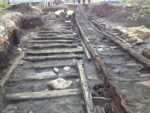 These precious archaeological remains were in danger from the moment they were unearthed. As soon as the timbers were exposed to the air, they began to decay. Organic materials that have been preserved for centuries in waterlogged soil need immediate conservation once they’re excavated to keep them from drying out, rotting and/or being devoured by an assortment of critters. You can’t leave them in situ unless you rebury them for their own protection, and because the site was going to be redeveloped, the reburied waggonway could easily have been damaged, even destroyed, by construction.
These precious archaeological remains were in danger from the moment they were unearthed. As soon as the timbers were exposed to the air, they began to decay. Organic materials that have been preserved for centuries in waterlogged soil need immediate conservation once they’re excavated to keep them from drying out, rotting and/or being devoured by an assortment of critters. You can’t leave them in situ unless you rebury them for their own protection, and because the site was going to be redeveloped, the reburied waggonway could easily have been damaged, even destroyed, by construction.
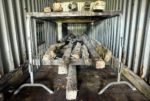 With the clock ticking, Tyne & Wear Archives & Museums (TWAM) was able to secure a grant of £20,000 from the Arts Council’s Preservation of Industrial and Scientific Material (PRISM) Fund for the immediately removal and storage of a 20-foot section of the Willington Waggonway, timber and stonework. The National Railway Museum stepped into the breach and collected the remaining timbers. They are being conserved together with their TWAM brethren at the conservation laboratories of the York Archaeological Trust which has extensive expertise in and specialized equipment for the preservation of ancient wood.
With the clock ticking, Tyne & Wear Archives & Museums (TWAM) was able to secure a grant of £20,000 from the Arts Council’s Preservation of Industrial and Scientific Material (PRISM) Fund for the immediately removal and storage of a 20-foot section of the Willington Waggonway, timber and stonework. The National Railway Museum stepped into the breach and collected the remaining timbers. They are being conserved together with their TWAM brethren at the conservation laboratories of the York Archaeological Trust which has extensive expertise in and specialized equipment for the preservation of ancient wood.
 Trust experts analyzed samples from the wood to determine their individual conditions and preservation needs. The diagnosis was that the timbers needed long-term soaking in a Polyethylene Glycol (PEG) bath followed by freeze-drying. The PEG replaces the water molecules in the wood with a waxy material that maintains the structure without contracting and expanding the way water does. Once the PEG has taken hold, a bout in the freeze-dryer finishes the job of sucking out the last drops of moisture, making the wood stable for display. The whole process can take up to 36 months.
Trust experts analyzed samples from the wood to determine their individual conditions and preservation needs. The diagnosis was that the timbers needed long-term soaking in a Polyethylene Glycol (PEG) bath followed by freeze-drying. The PEG replaces the water molecules in the wood with a waxy material that maintains the structure without contracting and expanding the way water does. Once the PEG has taken hold, a bout in the freeze-dryer finishes the job of sucking out the last drops of moisture, making the wood stable for display. The whole process can take up to 36 months.
Ian Panter, Head of Conservation, York Archaeological Trust said: “The conservation of the waggonway timbers has been a challenge, not because the wood was very decayed, but the opposite. Many of the timbers were very well preserved but with with pockets of more decay.
“This type of wood always represents a challenge but one which we relished getting to grips with. It is good to see something dating to the early stages of the industrial revolution being conserved, and this makes a refreshing change from the very ancient timbers that we’re usually involved with.
“Having personally been involved with the Lambton trackway, of similar date which was reburied, it is a step forward that something as important as the waggonway is being preserved for future generations.”
Eighty-seven of the timbers have been conserved already. They are now at the Regional Museum Store at Beamish where they are being studied for what they can tell us about 18th century railway construction and maybe even shipbuilding. A few of the preserved timbers, timbers awaiting conservation and stones from the wash hole went on display Friday at the Stephenson Railway Museum as part of the national Festival of Archaeology.
Not all of the timbers are out of danger yet. Fifty of them remain untreated and are at risk of decay unless another £10,000 can be secured to fund their conservation. A campaign with a target of 5,000 has been launched. You can donate to it here. Once the Willington Waggonway remains have been conserved and researched, the plan is to reconstruct as much of it as possible (mostly the intact 20-foot section) for permanent display at the Stephenson Railway Museum.
